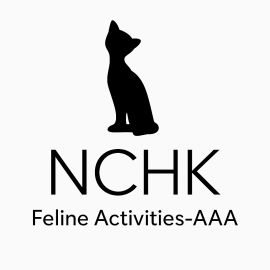Street Feline Activities: A Low-Threshold Model of Felinotherapy in Public Space
2025-09-24
Street Feline Activities: A Low-Threshold Model of Felinotherapy in Public Space
Abstract
This article introduces the concept of Street Feline Activities (also referred to as street felinotherapy) as a low-threshold approach to Animal-Assisted Interventions (AAI). The model emphasizes spontaneous encounters with therapy cats in public spaces, fostering mutual benefits for humans, animals, and handlers. It promotes social engagement, responsible attitudes toward animals, and healthy lifestyles. A pilot program was launched in June 2025 in Mladá Boleslav, Czech Republic.
Introduction
Animal-Assisted Interventions (AAI) are traditionally practiced within institutional or domestic settings. However, the Street Feline Activities concept extends the therapeutic potential of cats into the public sphere. Unlike structured interventions, this model focuses on low-threshold, voluntary participation, allowing individuals to engage in short, meaningful interactions without prior registration, medical referral, or institutional barriers.
Theoretical Background
The model is informed by:
-
Polyvagal Theory (Porges) – emphasizing the role of the social engagement system in regulating the autonomic nervous system through safe, prosocial encounters.
-
SIBAM model (Levine) – highlighting the integration of Sensation, Image, Behavior, Affect, and Meaning in therapeutic processes.
-
Ethical frameworks of responsible animal care – ensuring that the welfare of cats and the autonomy of handlers remain central.
Characteristics of Street Feline Activities
-
Mutual benefit: The encounters support well-being not only for participants but also for the cats and their handlers. Cats experience enriched environments, while handlers benefit from positive social interaction and recognition of their role.
-
Social engagement: The activities enhance community integration, reduce isolation, and stimulate conversation. Participants are encouraged to share personal memories of their own pets.
-
Voluntary and non-coercive participation: Individuals may approach, engage, or leave at any time. The atmosphere is informal, non-clinical, and pressure-free.
-
Promotion of responsible pet care: Encounters serve as an opportunity to model and promote ethical treatment of animals, welfare awareness, and balanced human–animal relationships.
-
Healthy lifestyle: Activities often take place in outdoor public spaces (e.g., parks, benches), indirectly supporting physical activity, nature contact, and psychosocial health.
Practical Implementation
The pilot program was initiated in June 2025 in Mladá Boleslav, Czech Republic. Cats, accompanied by trained handlers, participated in outdoor activities in safe, controlled public settings. Sessions lasted from a few minutes to an hour, depending on the willingness of both participants and animals. The informal setting allowed people to:
-
engage in casual conversations with handlers,
-
reminisce about their own animal companions,
-
enjoy nonverbal presence and gentle interaction with cats.
The cats, carefully selected for their temperament and stress resilience, were free to engage or withdraw, ensuring their welfare and autonomy.
Discussion
Street Feline Activities address a gap between structured therapeutic programs and spontaneous everyday interactions with animals. They serve as a community-based, preventive, and inclusive model of felinotherapy. Their low-threshold nature makes them accessible to populations who might not attend institutional AAI sessions, such as socially isolated individuals, passers-by, or those hesitant to engage in formal therapy.
Moreover, the model demonstrates that felinotherapy can be practiced responsibly beyond institutional walls, while maintaining high welfare standards for animals and emphasizing voluntary, reciprocal interaction.
Conclusion
The Street Feline Activities concept expands the field of felinotherapy by introducing a low-threshold, socially engaging, and ethically grounded model in public space. It promotes health, social inclusion, and responsible attitudes toward animals, while respecting the autonomy and well-being of both humans and cats. Further research and practice will help refine this approach and evaluate its long-term benefits.
Preview of picture in folder Street Feline Activities







